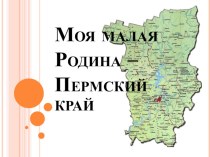- Главная
- Разное
- Бизнес и предпринимательство
- Образование
- Развлечения
- Государство
- Спорт
- Графика
- Культурология
- Еда и кулинария
- Лингвистика
- Религиоведение
- Черчение
- Физкультура
- ИЗО
- Психология
- Социология
- Английский язык
- Астрономия
- Алгебра
- Биология
- География
- Геометрия
- Детские презентации
- Информатика
- История
- Литература
- Маркетинг
- Математика
- Медицина
- Менеджмент
- Музыка
- МХК
- Немецкий язык
- ОБЖ
- Обществознание
- Окружающий мир
- Педагогика
- Русский язык
- Технология
- Физика
- Философия
- Химия
- Шаблоны, картинки для презентаций
- Экология
- Экономика
- Юриспруденция
Что такое findslide.org?
FindSlide.org - это сайт презентаций, докладов, шаблонов в формате PowerPoint.
Обратная связь
Email: Нажмите что бы посмотреть
Презентация на тему Top 10 wildlife conservation projects around the globe
Содержание
- 2. Do you have a passion for travel?
- 3. Asian Elephant Conservation
- 4. Asian Elephant ConservationMany elephants have undergone the
- 5. Seal Protection in South Africa
- 6. Seal Protection in South AfricaAs furry and
- 7. Sea Turtle Conversation
- 8. Sea Turtle ConversationThe sea turtle population continues
- 9. Dolphin Conservation in Kenya
- 10. Dolphin Conservation in KenyaAs tourism continues to
- 11. Brown Bear Protection in Romania
- 12. Brown Bear Protection in RomaniaRomania's forests and
- 13. Panda Conservation in China
- 14. Panda Conservation in ChinaGiant Pandas, one of
- 15. Colobus Monkey Conservation in Africa
- 16. Colobus Monkey Conservation in Africa The Colobus
- 17. Puma and Jaguar Conservation
- 18. Puma and Jaguar Conservation While jaguars and
- 19. Penguin Rehabilitation in Africa
- 20. Penguin Rehabilitation in AfricaAt the start of
- 21. Great White Shark Conservation
- 22. Скачать презентацию
- 23. Похожие презентации
Do you have a passion for travel? Wildlife volunteering can take you to the farthest and lesser-traveled reaches of the world while at the same time giving you the opportunity to get to know our friends




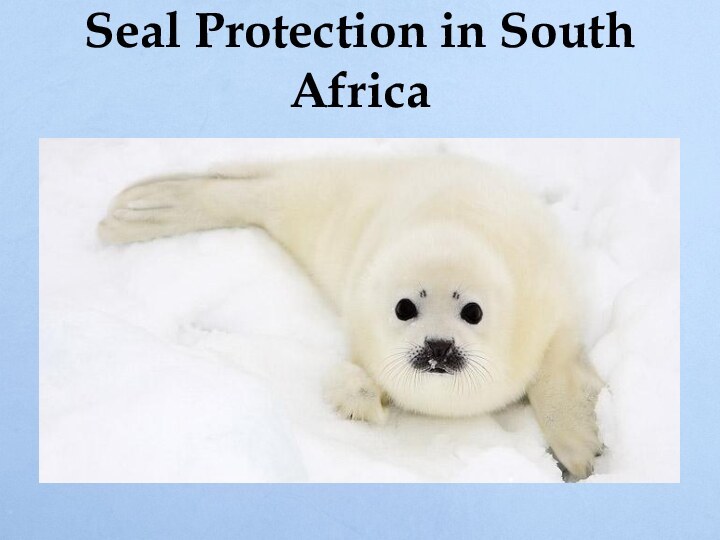



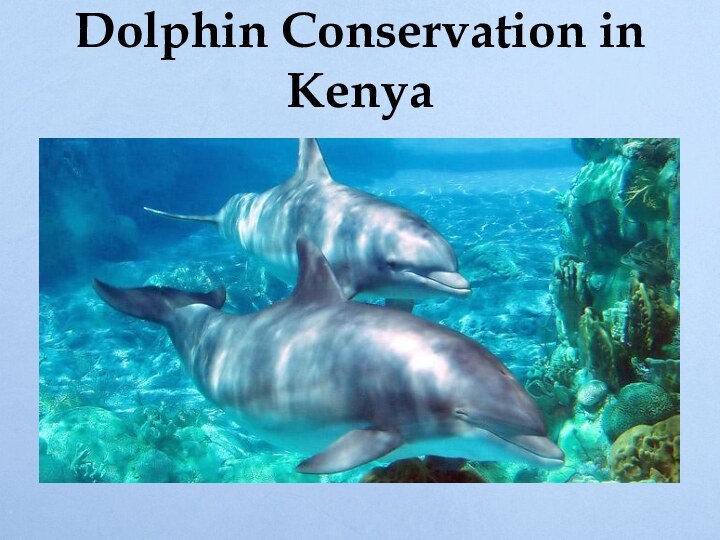






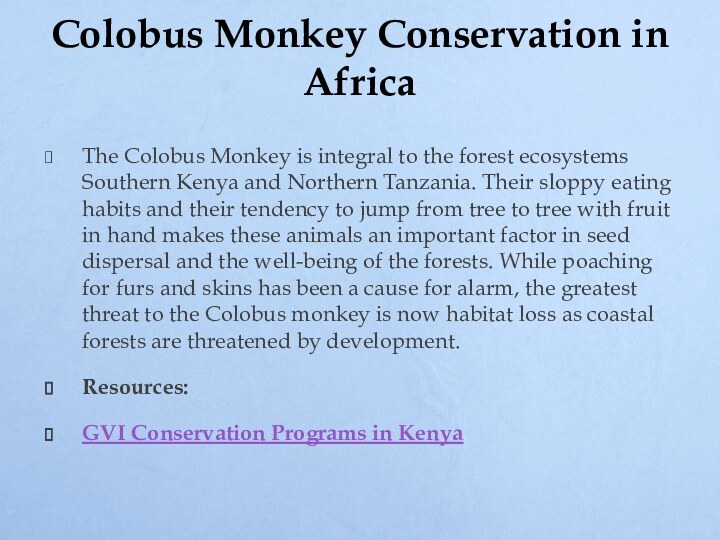
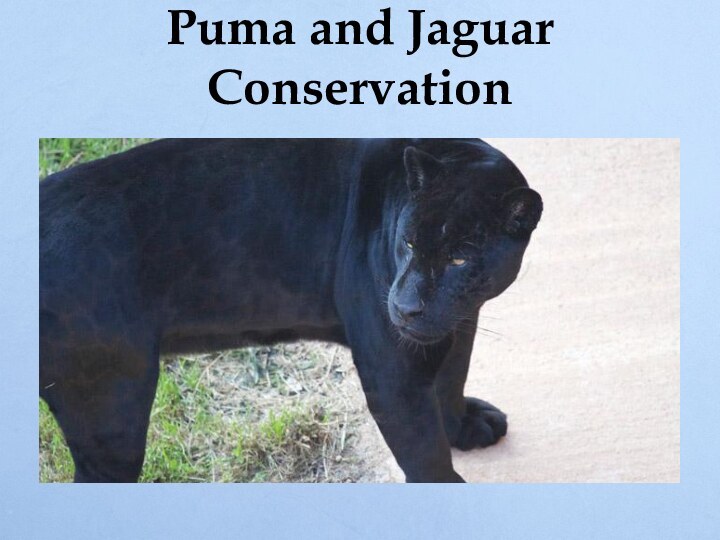

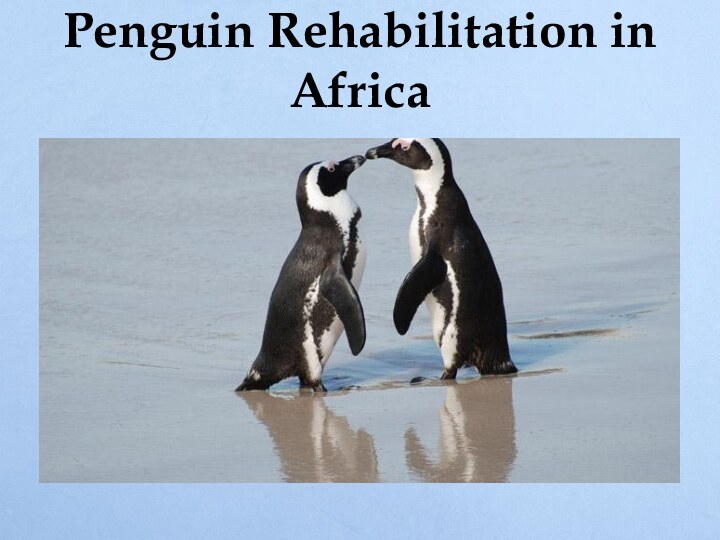



Слайд 4
Asian Elephant Conservation
Many elephants have undergone the harsh
realities of mistreatment in the tourist industry-be it from
street begging, elephant treks, or circus work. Volunteer with local communities to help protect the Asian elephant population and reintroduce previously abused elephants to protected forests or elephant camps in Asia. Learn about one of the most gentle of giants of the animal kingdom while encountering some of the most beautiful landscapes in the world.Resources:
Volunteer with ISV in Thailand
Work at an Elephant Orphanage in Sri Lanka
Слайд 6
Seal Protection in South Africa
As furry and cute
as they are, seals don't have it easy. Every
year, hundreds of thousands of seals are hunted for their pelts, harmed in oil-spills or environmental misdeeds, or injured in boating accidents. Get hands on experience working with injured seals and creating safe environments for them to return to!Resources:
Travellers Conservation Projects in South Africa
Слайд 8
Sea Turtle Conversation
The sea turtle population continues to
decline particularly in the Indian Ocean region. Exploitative activities
such as egg poaching alongside coral reef and sea grass depletion, beach pollution, and an increase in coastal development all pose a threat to the future of sea turtles in the region. The coast of the Indian Ocean is a major hatching ground for sea turtles. Help give them the best chance at survival in this area and assist with hatching, incubating, and rearing sea turtles for a safe return to the ocean.Resources:
Sea Turtle Research in Greece
Слайд 10
Dolphin Conservation in Kenya
As tourism continues to grow
on the Kenyan coast, it's important to conduct research
to preserve the marine wildlife in the changing area. The Shimoni Archaepalego, a community off the coast of the Indian Ocean, is rich in marine mammals, particularly dolphins. Volunteers are needed to conduct survey research, monitoring the dolphin population and behaviors in the area. This data is essential to help local communities develop sustainable tourism practices to protect marine wildlife.Resources:
Dolphin Conservation in Africa
Volunteer with a Marine Research Team
Слайд 12
Brown Bear Protection in Romania
Romania's forests and mountains
are home to 60% of Europe's brown bear population.
Unfortunately, in the absence of animal rights legislation in Romania's recent past, a small portion of this population has experienced mental and physical abuse as tourist attractions in circuses, poorly maintained zoos, theme restaurants, and other venues. While it is now illegal to keep wild animals in captivity in Romania, these abused bears need to be rehabilitated before their return to their natural habitats.Resources:
Volunteer with Projects Abroad in Romania
Слайд 14
Panda Conservation in China
Giant Pandas, one of the
world's most recognizable and lovable creatures, are listed as
endangered on the World Conservations Union's Red List of Threatened Species with less than 1600 living in the wild. China's growing economy has pushed them from the lowlands and continues to encroach their forest habitats in the mountains. Pressures of habitat loss and poachers put these pandas in a precarious position. Experience China and help ensure the future of the Giant Panda in the Yangtze Basin.Resources:
Volunteer with Pandas with i-to-i
Слайд 16
Colobus Monkey Conservation in Africa
The Colobus Monkey is
integral to the forest ecosystems Southern Kenya and Northern
Tanzania. Their sloppy eating habits and their tendency to jump from tree to tree with fruit in hand makes these animals an important factor in seed dispersal and the well-being of the forests. While poaching for furs and skins has been a cause for alarm, the greatest threat to the Colobus monkey is now habitat loss as coastal forests are threatened by development.Resources:
GVI Conservation Programs in Kenya
Слайд 18
Puma and Jaguar Conservation
While jaguars and pumas are
feared as predators of the animal kingdom, these big
cats have plenty to be scared. Both jaguars and most species of pumas are classified as endangered in South America under the Endangered Species Act. These jungle cats are threatened by deforestation, land development, and illegal poaching. Travel to South America to help gather data on pumas and jaguars in this area to help shape policies to protect these rare cats.Resources:
Animal Volunteer Program in Bolivia
Слайд 20
Penguin Rehabilitation in Africa
At the start of the
20th century, it was estimated that there were over
1.45 million adult African Penguins. The latest census reveals that there are now less than 100,000 adults left. This steep decline can be attributed to the reduced availability of food, as penguins must now compete with the commercial fishing industry. Furthermore, African Penguin populations are especially vulnerable in the event of a catastrophe or epidemic because of their concentration to small geographic regions. Be a part of penguin rescues, relocation and rehabilitation.Resources:
Penguin Rescue Initiative in South Africa


